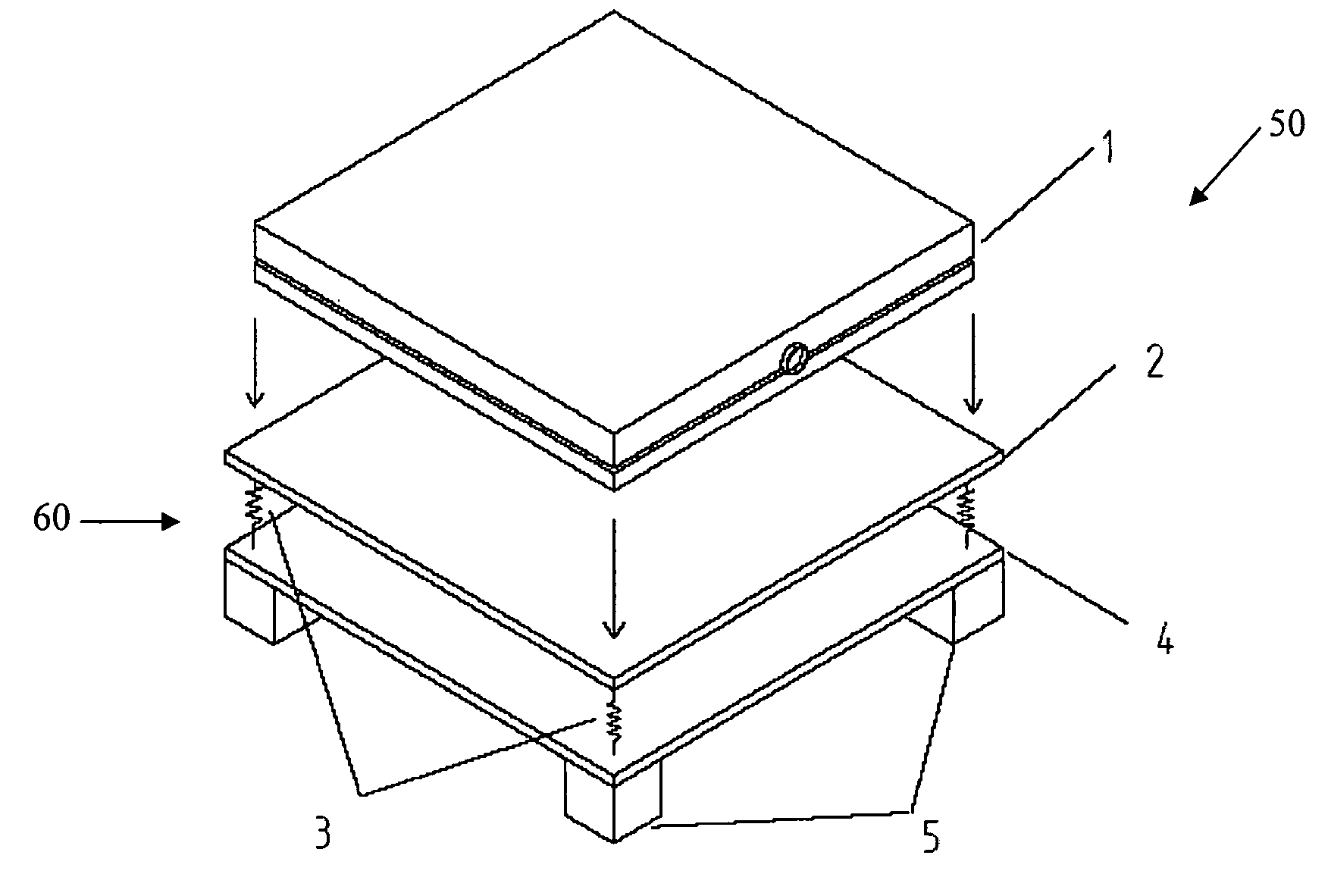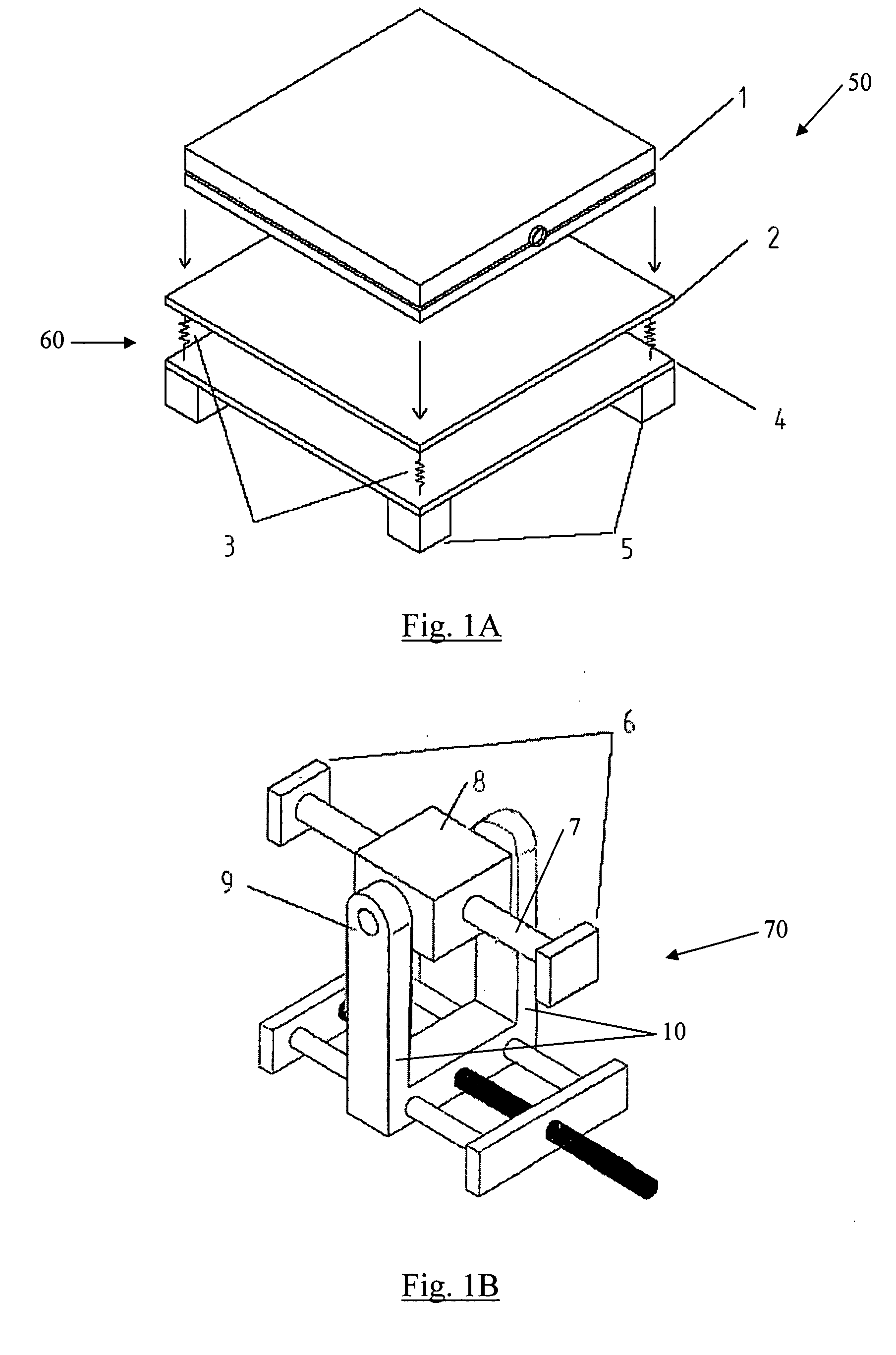Device for computerized dynamic posturography and a method for balance assessment
a dynamic posturography and computerized technology, applied in the field of sensory and motor control impairment assessment methods and apparatuses, can solve the problems of limited value and difficult reproduction, and achieve the effects of assessing and training determining and training the individual's ability to recover balance, and assessing and training the balance function and stability
- Summary
- Abstract
- Description
- Claims
- Application Information
AI Technical Summary
Benefits of technology
Problems solved by technology
Method used
Image
Examples
Embodiment Construction
[0021]The preferred embodiment of the invention 50 is illustrated in FIG. 1A in association with a conventional force plate measuring device 1. In typical use, the invention includes a conventional safety harness support, which is not illustrated, used to prevent falls; and a computer to which the force plate device 1 and the components discussed below are connected. Thus, the computer can actuate the components below and receive signals from the force plate device 1. The invention 50 is a single assembly for convenience and portability, but which includes several components that are described immediately below in detail.
[0022]A platform 60 houses the components of the invention, and the platform includes a first frame, such as the top plate 2, and a second frame, such as the bottom plate 4. The conventional force plate measuring device 1 is preferably mounted to the upper surface of the top plate 2, and the bottom plate 4 is attached to the feet 5, which provide a broad base of sta...
PUM
 Login to View More
Login to View More Abstract
Description
Claims
Application Information
 Login to View More
Login to View More - R&D
- Intellectual Property
- Life Sciences
- Materials
- Tech Scout
- Unparalleled Data Quality
- Higher Quality Content
- 60% Fewer Hallucinations
Browse by: Latest US Patents, China's latest patents, Technical Efficacy Thesaurus, Application Domain, Technology Topic, Popular Technical Reports.
© 2025 PatSnap. All rights reserved.Legal|Privacy policy|Modern Slavery Act Transparency Statement|Sitemap|About US| Contact US: help@patsnap.com



